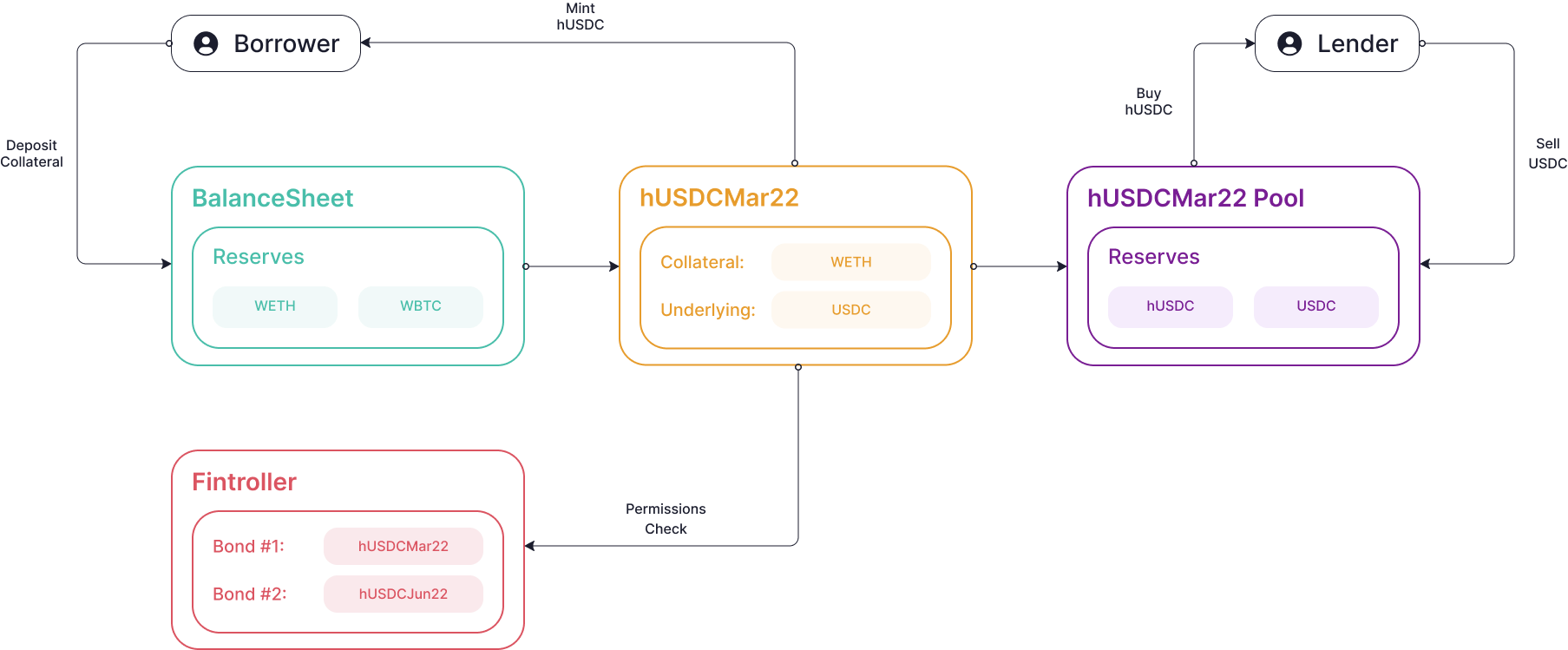Protocol Overview
Hifi is a fixed-rate, fixed-term lending protocol based on the The Yield Protocol paper. The protocol is implemented in a system of Ethereum smart contracts.

Core Ideas
hTokens are Synthetics
If there's something you need to know about Hifi, it's the fact that the protocol issues synthetic assets called hTokens, which track an arbitrary underlying asset.
Let's take as an example an hToken with the symbol "hUSDC". This is a synthetic asset that tracks the USDC stablecoin. Borrowers mint hUSDC by depositing collateral, which can be any asset (say, ETH). Lenders sell their USDC in exchange for hUSDC. After expiration, any holder of hUSDC can redeem the synthetic asset in exchange for USDC.
Interest Rates
Unlike most decentralized finance protocols, interest rates on Hifi are not controlled by the protocol developer. It is the open market that dictates the interest rate that participants pay or receive.
When we issue an hToken, we also create a Hifi pool for the hToken and the underlying. Anyone can provide liquidity to this pool and earn fees from trades. The amount of hTokens bought or sold in the pool is used in calculating the effective interest rate.
Say you are interested in lending 10,000 USDC on Hifi. You open the Hifi interface and you get quoted an interest rate of 5%. Supposing the expiration date is 1 year into the future, you will receive ~10,500 hUSDC in exchange for your 10,000 USDC at maturity. Thus, if you hold on to your hUSDC tokens for 1 year, you will be able to redeem it for 10,500 USDC.
Collateralization
Similar to other decentralized finance protocols, Hifi has over-collateralization rules. That is, borrowers must be over-collateralized before they can mint hTokens.
While for high-profile assets like ETH Hifi will use the industry standard of 150%, the margin requirement for an arbitrary collateral depends on several factors:
- Quality of collateral asset
- How reliable the oracle price feed is
- Market conditions (recall Black Thursday)
When the value of the borrower's collateral falls below this collateralization ratio, it is said that the account has fallen "underwater" and it can be liquidated. Read more about this in the Security section.
Code Base
The smart contract code is publicly verifiable on GitHub:
We're taking great care of our smart contract releases by tagging, versioning and publishing to npm. In addition, we're maintaining detailed CHANGELOG files for each package in the monorepo.
All contracts have their source code verified on Etherscan.
Licensing
The smart contracts in the protocol and the amm packages are released under the BUSL-1.1 license. The expiry date of this license is set to June 1, 2024, at which time the code will start being licensed under LPGL v3.
All other contracts are licensed under LGPL v3, except for our testing-related contracts which are unlicensed.
Protocol Math
The Hifi protocol uses the PRBMath fixed-point math library to represent fractional quantities with sufficient precision. We need this library especially in the AMM, but it's also helpful in calculating account liquidities in the BalanceSheet contract.
Most numbers are represented as a "UD60x18" (unsigned integers scaled by 10^18) in order to perform math operation at a high enough level of precision. Thus in Hifi numbers have 18 decimals of precision, similar to how ETH is equal to 10^18 wei.